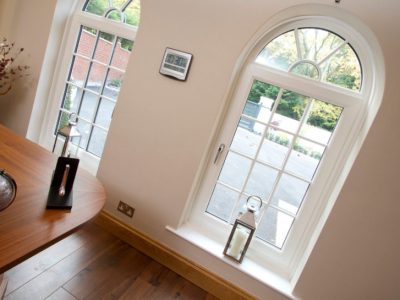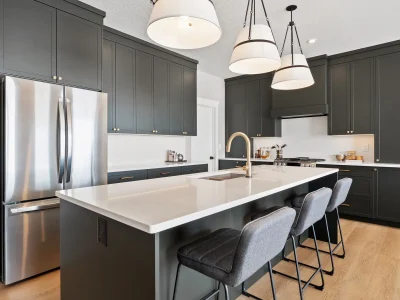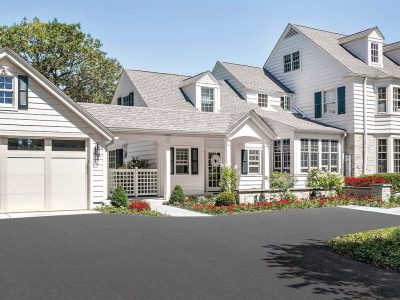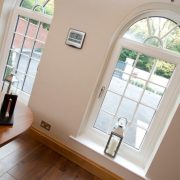Modern buildings demand windows that do more than fill an opening; they must contribute to a comfortable interior, efficient energy use, and a cohesive façade. The S 8000 approach places equal weight on performance and design freedom, focusing on how geometry, sealing, and glazing options work together as a system. By exploring its structural layout and acoustic design, you can see how the profiles support quiet, thermally stable spaces without compromising daylight or aesthetics. This overview also explains how adaptable glazing and installation flexibility help architects and builders meet varied project requirements. For those comparing advanced solutions from GEALAN Window Systems with other contemporary options, the S 8000 concept provides a clear benchmark for durability, efficiency, and visual appeal.
Profile Geometry Designed for Strength and Insulation Balance
The strength of a window begins with its profile geometry, and the S 8000 concept prioritizes a balanced arrangement of chambers and reinforcements. Rather than simply thickening walls, the design strategically places material where it counters load and torsion, ensuring reliable sash stability and long-term alignment. This helps protect critical tolerances around seals and glazing seats, which in turn supports thermal and acoustic performance. The GEALAN S 8000 System is engineered to make the most of its installation depth, allowing strong hardware anchoring while preserving slender sightlines. Together, these choices enable robust durability without sacrificing the elegance or efficiency that modern buildings expect.
Why geometry matters for everyday performance
A well-optimized profile geometry resists seasonal movement and usage-induced stress, which helps windows open and close smoothly over many years. By guiding forces into reinforced zones and distributing them through defined webs, the profiles reduce the risk of warping under wind pressure or heavy glass. This geometry also supports consistent gasket compression, an often-overlooked detail that preserves airtightness and reduces drafts. With tighter control over deformations, glazing remains uniformly seated, minimizing cold bridges at the edges. The result is balanced rigidity and reliable insulation in daily use, with fewer service interventions over the window’s life.
Noise Reduction Features That Support Indoor Comfort
Noise control is a defining quality in urban and mixed-use environments, and the S 8000 approach integrates multiple layers of acoustic defense. Multi-chamber profiles create longer transmission paths for sound, reducing the direct passage of vibrations from the exterior to the interior. Carefully formed sealing levels work with the frame and sash to limit gaps that sound can exploit, while the glazing rebate supports thicker acoustic glass when required. Even the geometry around corners and transoms aims to minimize resonance points, a subtle detail that pays dividends in comfort. In high-traffic neighborhoods or near transit corridors, these combined measures contribute to a markedly quieter interior.
Design details that block urban noise
Acoustic performance relies on the continuous integrity of the sealing concept, and here the profiles maintain consistent pressure along the perimeter. Specialized elastomer gaskets retain elasticity over time, so they adapt to small dimensional changes without losing contact. The GEALAN S 8000 System also supports laminated glass options, which use interlayers to dampen sound energy across a broad frequency range. Robust corner connections reduce the chance of micro-gaps that can transmit whistling or high-frequency noise. With each element working in concert, the system achieves *perceptible* improvements in sound attenuation that support healthier, more focused indoor environments.
Compatibility With Multiple Glazing Thicknesses and Configurations
A defining strength of the S 8000 concept is its generous glazing capacity, which accommodates a spectrum of glass build-ups. From efficient double panes to high-performance triple glazing and laminated acoustic units, the profiles allow designers to tailor the window to specific climate and comfort targets. Flexible glazing beads and deep rebates help seat thicker units securely, while maintaining the clean lines that contemporary aesthetics favor. This versatility also extends to specialty combinations, such as solar-control coatings paired with thermal layers, enabling nuanced tuning of heat gain and glare. In projects that must balance daylighting with strict energy budgets, the system’s glazing compatibility opens valuable design pathways.
Glazing choices for different building goals
Different building typologies call for different glass strategies, and the S 8000 framework meets those needs without extensive customization. In residential settings, higher-performance triples can be specified for façades facing harsh weather, while quieter sides might use lighter units to reduce costs and weight. Commercial projects benefit from laminated or security glazing options, particularly where ground-floor transparency meets safety requirements. The GEALAN S 8000 System integrates these choices with hardware and seals designed to keep tolerances tight, even as glass thickness increases. For teams already familiar with GEALAN Window Systems, this compatibility streamlines specification and helps maintain a consistent design language across mixed-use developments.
Thermal Barriers That Reduce Heating and Cooling Demand
Thermal performance is not a single feature but a relationship among geometry, seals, and glazing, and the S 8000 profile structure addresses each part. Multi-chamber layouts establish multiple thermal breaks within the frame and sash, slowing heat transfer from outside to inside. The sealing system complements this by maintaining airtightness under real-world conditions, so the gains made in the lab translate into lived comfort. With suitable glazing, the overall unit can achieve low heat transfer values, supporting both winter warmth and summer cooling efficiency. This synergy is one reason the GEALAN S 8000 System is chosen for projects aiming to improve energy use without compromising design.
Where energy savings show up
Reduced heat loss means smaller demands on heating systems, and in many climates, that can also lead to downsized HVAC equipment. Better airtightness limits drafts, so indoor temperatures feel more stable at the same thermostat setpoint, improving comfort while keeping bills in check. Lower frame and edge-of-glass conductivity help mitigate condensation risk, preserving finishes and improving indoor air quality. In aggregate, these factors make it easier to meet stricter building codes and sustainability targets. Importantly, the thermal barriers work quietly in the background—keeping the building comfortable and responsive through daily and seasonal shifts.
Installation Flexibility for Residential and Commercial Settings
Jobsite realities vary, and a window system that adapts to different wall builds and phasing can save time and cost. The S 8000 approach offers accessories and coupling options that simplify alignment across large openings, curtain wall transitions, or segmented façades. Profiles are designed to accept widely used hardware patterns, which helps installers source components and maintain consistent performance across units. Thoughtful details at sills and reveals promote proper water management, reducing the chance of callbacks due to moisture issues. When schedules are tight, this practicality translates into smoother coordination between trades and more predictable outcomes.
Practical options that speed the install
Efficient installation begins with predictable tolerances, and the profiles’ stable geometry supports square, true frames that stay set during fixing and foam application. Adaptable packers and reinforcement strategies handle heavier panes without complicating the process, which is vital for larger-format windows. Preassembly of couplers and mullions can happen offsite, shortening crane time and minimizing disruption on dense urban projects. Clear documentation and shared component standards reduce training overhead for crews moving between projects that use the same system family. Taken together, these choices help teams deliver reliable, repeatable quality under commercial pressures without sacrificing performance.
Design Options That Support Modern Architectural Requirements
Architectural expression depends on proportion, texture, and light, and a capable system must serve those priorities while meeting technical constraints. The S 8000 concept keeps sightlines crisp and controlled, supporting wide panes and high glass-to-frame ratios for abundant daylight. Surface finishes and color options accommodate everything from restrained, monochrome palettes to warmer tones that complement natural materials. With contemporary hardware and venting choices, designers can integrate tilt-turn, fixed, and French configurations in the same visual language. This flexibility allows the windows to recede when they should—or become a refined design element when the façade calls for it.
Balancing aesthetic intent with performance
Good design ages well, and durable surfaces that resist fading and abrasion preserve the intended look with minimal upkeep. Carefully engineered seals and tolerances ensure that the pursuit of slim profiles does not erode thermal or acoustic performance. For heritage contexts, proportional frames and nuanced color matching help respect existing character while upgrading comfort and efficiency. In new builds, clean joints and precise corners read as high quality, reinforcing the project’s overall design narrative. For teams comparing premium systems, GEALAN Window Systems provides a cohesive palette that aligns form, function, and long-term value, making it easier to deliver architecture that performs as well as it looks.













Comments